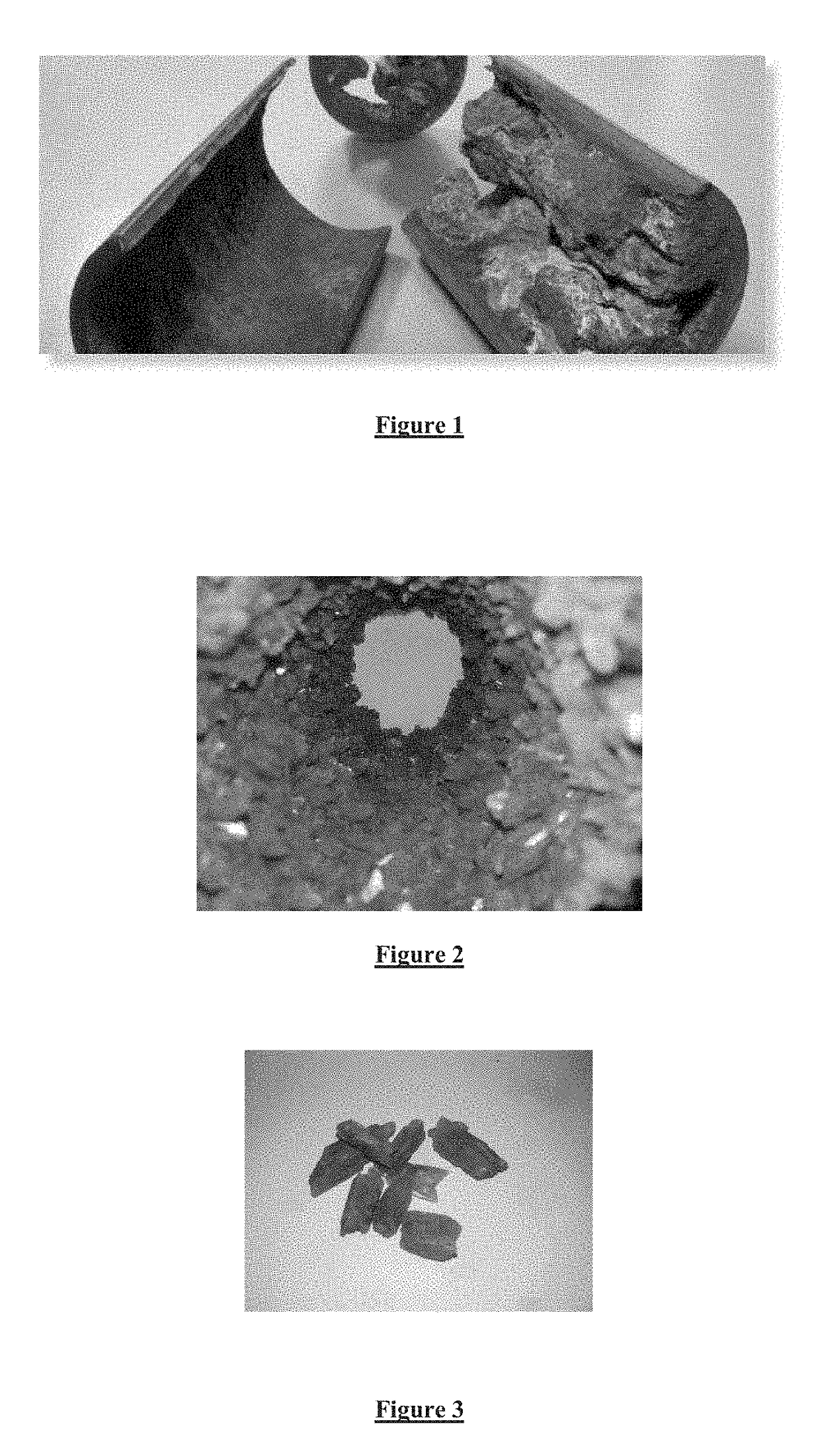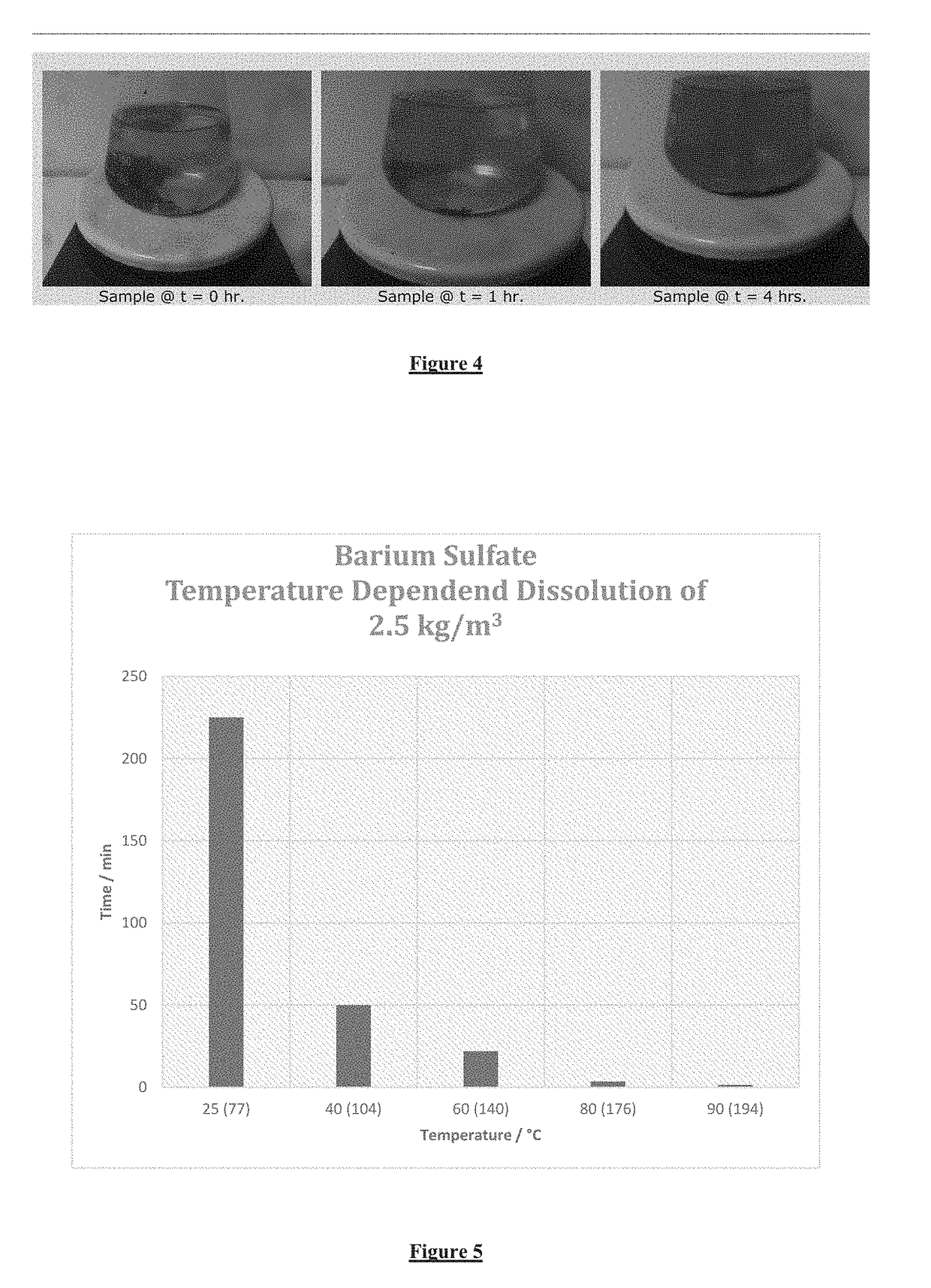Composition useful in sulfate scale removal
a technology of sulfate scale and composition, which is applied in the direction of specific water treatment objectives, waste water treatment from quaries, chemistry apparatus and processes, etc., can solve the problems major issue of sulfate scale on surface equipment, heat exchangers and associated piping, etc., and achieve the effect of sufficient exposure tim
- Summary
- Abstract
- Description
- Claims
- Application Information
AI Technical Summary
Benefits of technology
Problems solved by technology
Method used
Image
Examples
Embodiment Construction
[0040]According to a preferred embodiment of the present invention, the sulfate scale removing composition provides a safety advantage over known compositions. By the addition of potassium carbonate to the K5DTPA, the same solubility numbers can be attained at a lower pH. Instead of 13.5 a pH of 11 was sufficient to get comparable solubility numbers. This represents a considerable difference and safety and environmental advantage.
[0041]According to a preferred embodiment of the present invention, the sulfate scale removing composition provides improved rates of scale dissolution. This, in turn, reduces the down time or non-producing time for wells or equipment where the scale is being removed or treated. It also reduces the cost of such treatment, by limiting the treatment time and bring revenue generation back on-line faster.
[0042]According to a preferred embodiment of the present invention, a composition for removing sulfate scale permits the removal thereof at a much lower pH tha...
PUM
| Property | Measurement | Unit |
|---|---|---|
| solubility | aaaaa | aaaaa |
| solubility | aaaaa | aaaaa |
| temperatures | aaaaa | aaaaa |
Abstract
Description
Claims
Application Information
 Login to View More
Login to View More - R&D
- Intellectual Property
- Life Sciences
- Materials
- Tech Scout
- Unparalleled Data Quality
- Higher Quality Content
- 60% Fewer Hallucinations
Browse by: Latest US Patents, China's latest patents, Technical Efficacy Thesaurus, Application Domain, Technology Topic, Popular Technical Reports.
© 2025 PatSnap. All rights reserved.Legal|Privacy policy|Modern Slavery Act Transparency Statement|Sitemap|About US| Contact US: help@patsnap.com


